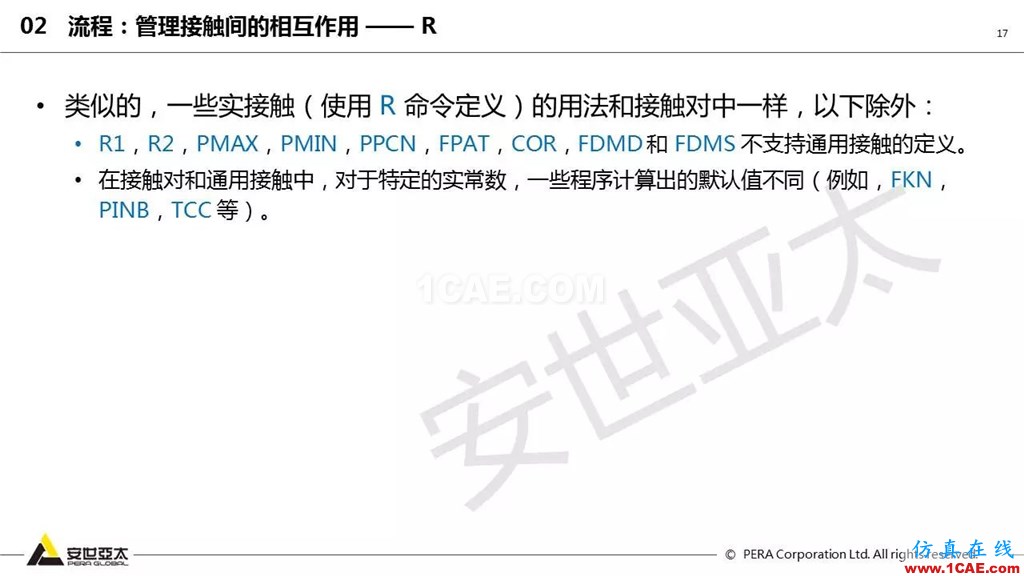

APDL command is inserted to redefine joint as a crew joint. Bolt thread contact between bolt and nut is replaced by a cylindrical joint. New bolt thread contact technique in ANSYS 15.0 is applied to model the contact between bolt and nut, similar to Bolt Model 3 (recommended 4 elements span 1 thread width). 
Better mesh controls can be applied to generate hex mesh.The bolt and nut are defeatured and sliced to be sweepable bodies.Contact between bolt and flange, nut and bolt are defined as bonded with asymmetric behaviour.Tetrahedral elements are used, similar to Bolt Model 1 use contact sizing to increase number of elements in thread area.The computational cost for getting similar stresses in thread region is reduced by a factor of 10 compared to Bolt Model 1 This contact method defines all of the thread characteristics. New bolt thread contact technique in ANSYS 15.0 is applied to define the contact between bolt and nut.Threads on bolt and nut are removed, similar to Bolt Model 2.Contact between bolt and flange, nut and bolt are defined as any contact type aside from bonded.Tetrahedral mesh are used, similar to Bolt Model 1, but less mesh on thread region can be obtained.The removal of thread could influence the bolt stiffness subjected to loadings.Tetrahedral mesh would normally be produced, the element quality on threads need to be check carefully, fine mesh needs to be used on the threads.Good geometric representation of stiffness if mesh is fine enough.
Full thread on bolt and nut are modelled.A simple eight-bolt flange model is used for assessing the different methods.

This blog summarises eight methods for modelling bolts in ANSYS 15.0. How one prepares the bolt geometry is an essential factor that will influence the subsequent modelling techniques including meshing, contact and analysis settings. – Step 3: Apply in-service loads to structures – Step 2: Lock the defined bolt pretension load
Mesh: Minimum DOF for best representation/ Hex or Tet. Prepare geometry: bolt and associated components. The approach to modelling bolts usually involves undertaking the following: Therefore, efficient methods to model bolts are always desirable. Modelling bolts for three-dimensional finite element applications has always been a tricky proposition because the details of bolt geometric features usually result in large model size and high computational cost. Just to reiterate the answer, for a press fit dowel or initially gap that may close on load, use frictionless (or rough) contact, with pure penalty formulation.Bolted joints are commonly used to assemble mechanical structures. The point is initial gaps are not 'forced' to close, and that reactions on the contact area only occur if penetration is calculated. Any gaps will close only if external forces cause them to, but no reaction will occur on the contact surface until the geometry actually comes into contact. If frictionless (or rough) contact with pure penalty formulation is used, any initial penetration is closed resulting in stresses in the adjacent parts. If augmented or normal lagrange formulation of frictionless contact is used, the surfaces will not close and the parts remain unstreassed (i.e., initial penetration or gap is ignored regardless of add offset or adjust to touch setting, acts like a Constraint Equation would). If bonded contact is used, the initial gap is ignored, and a press fit dowel remains unstressed. 
This is similar to a press fit dowel scenario. Maybe my question was vague, but I did figure it all out, so here is what I came up with.








 0 kommentar(er)
0 kommentar(er)
